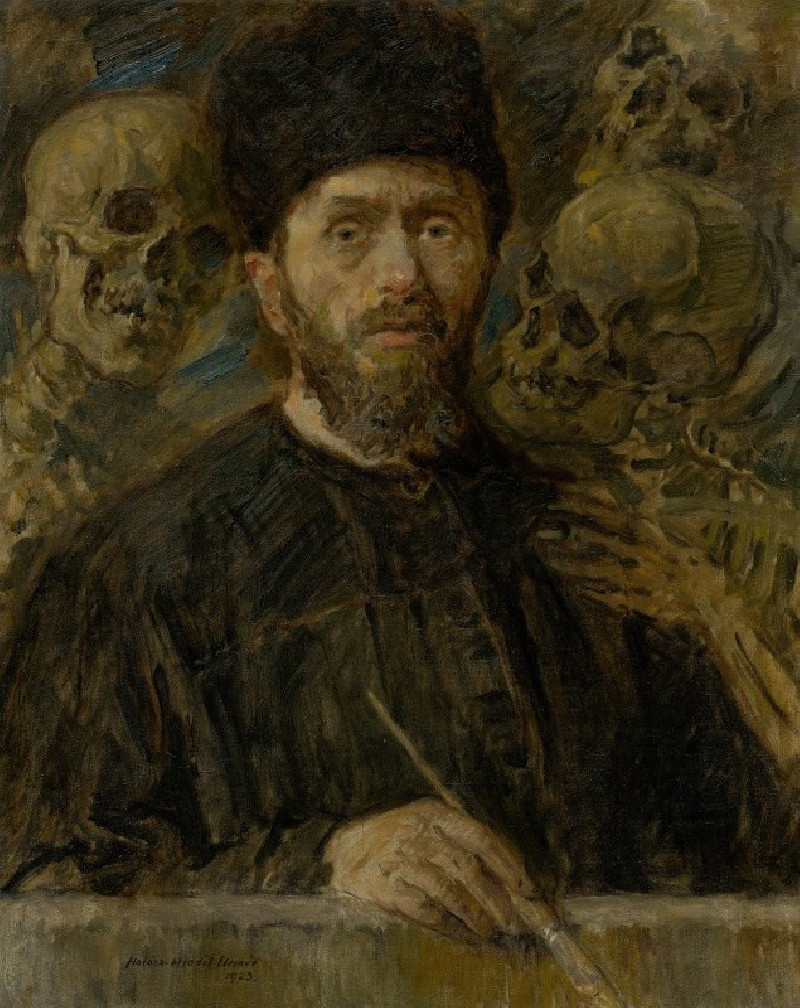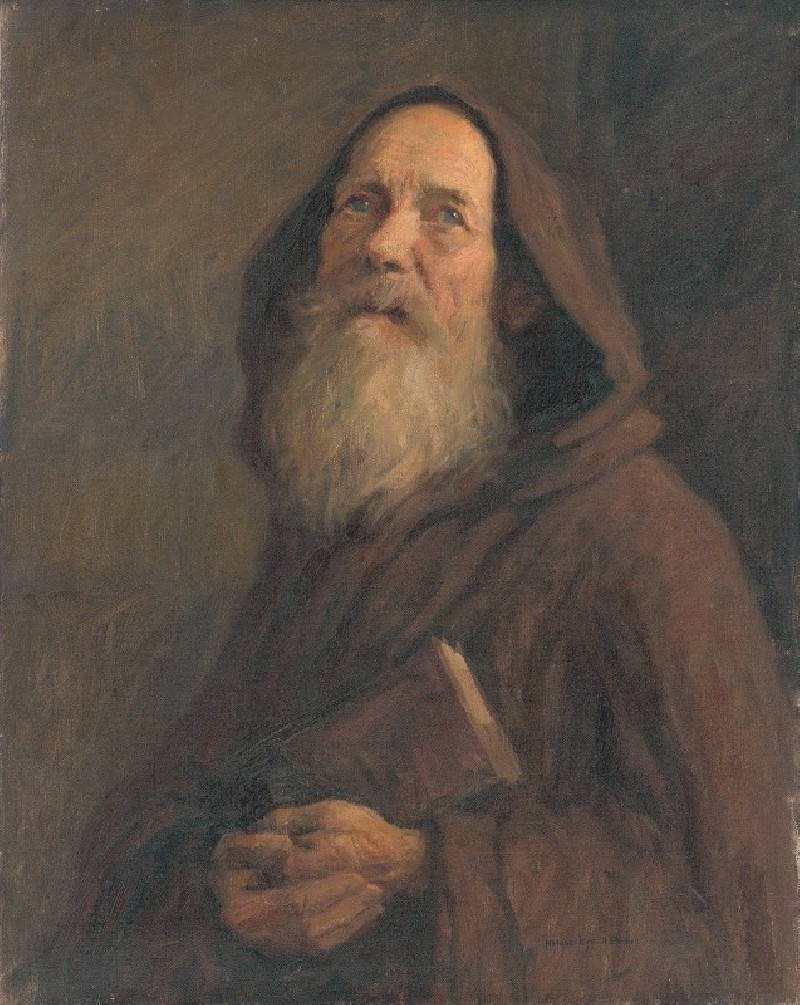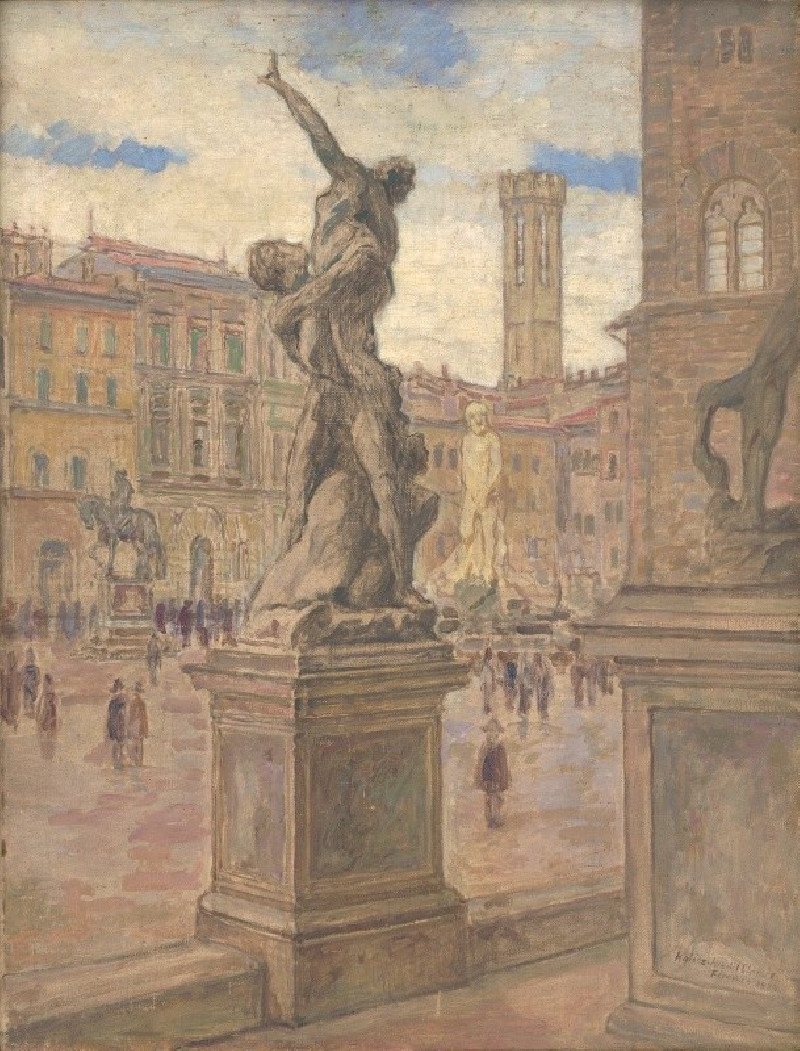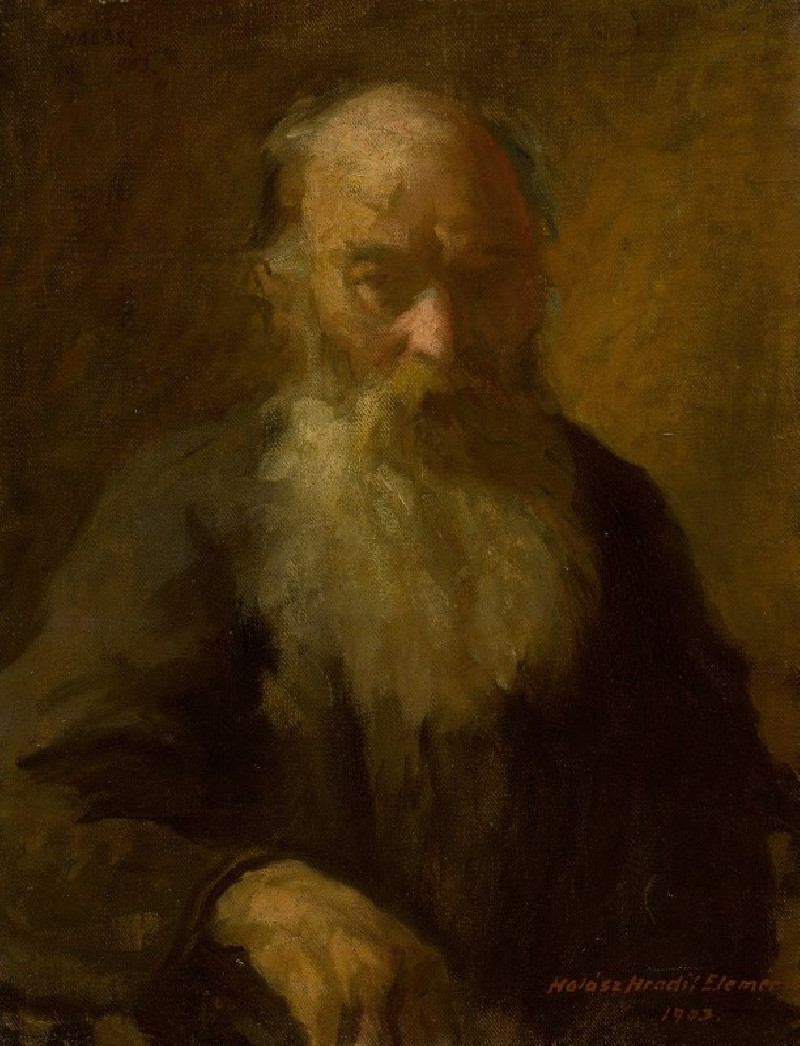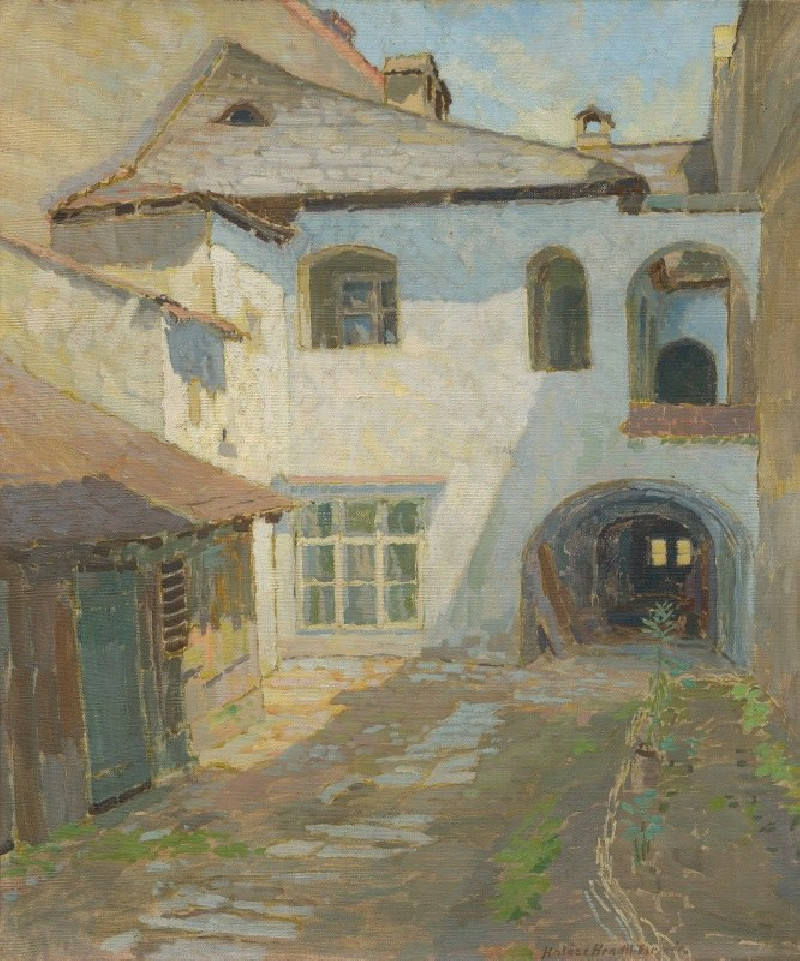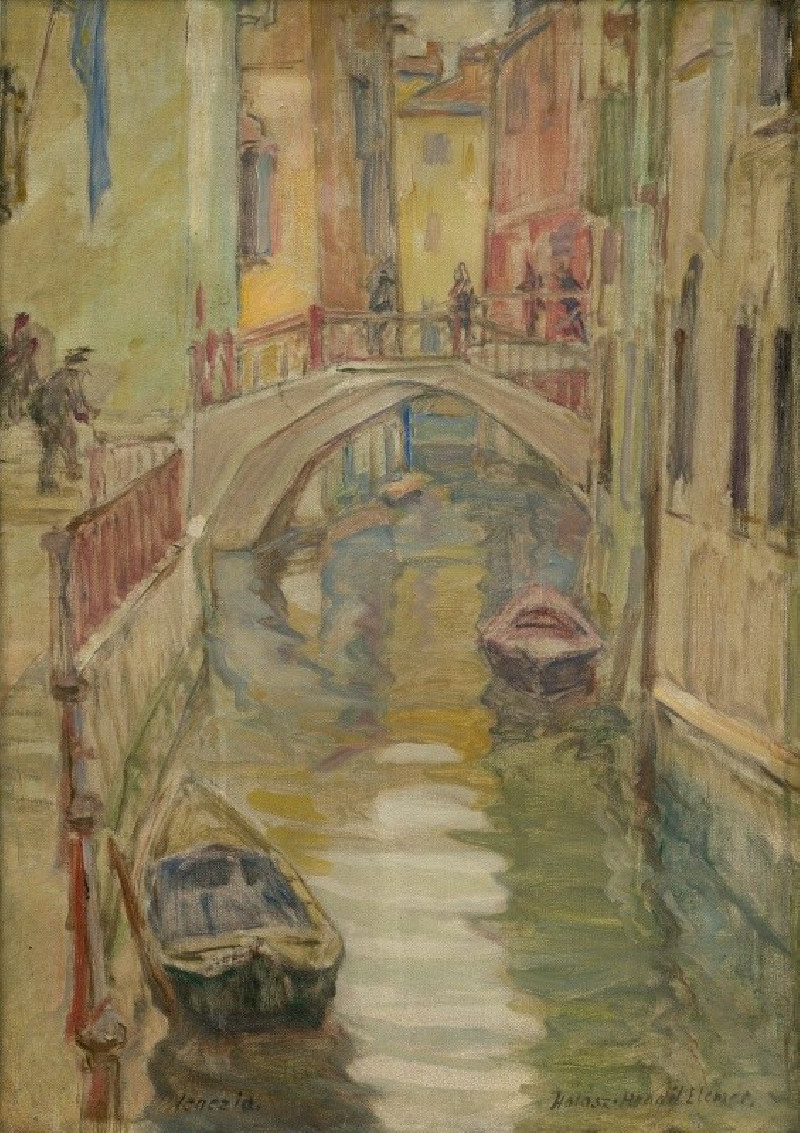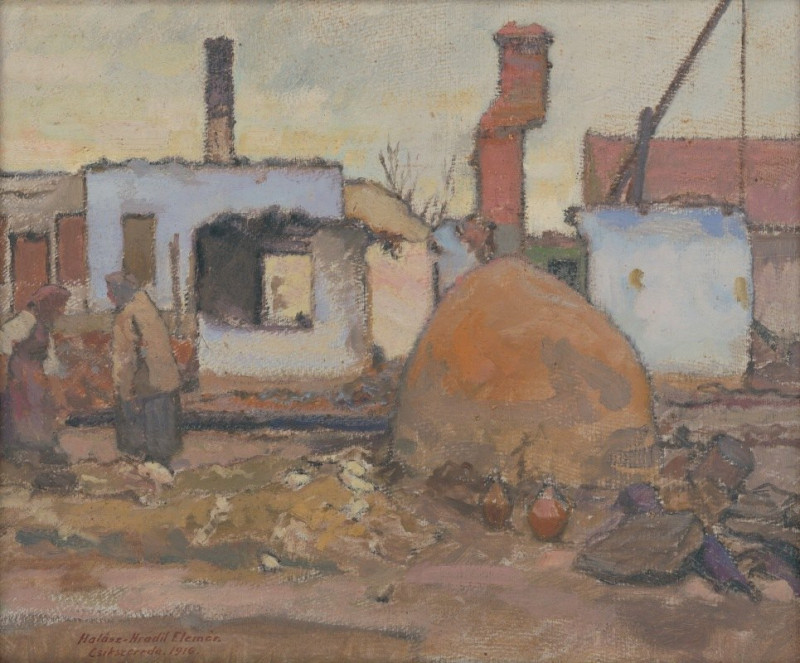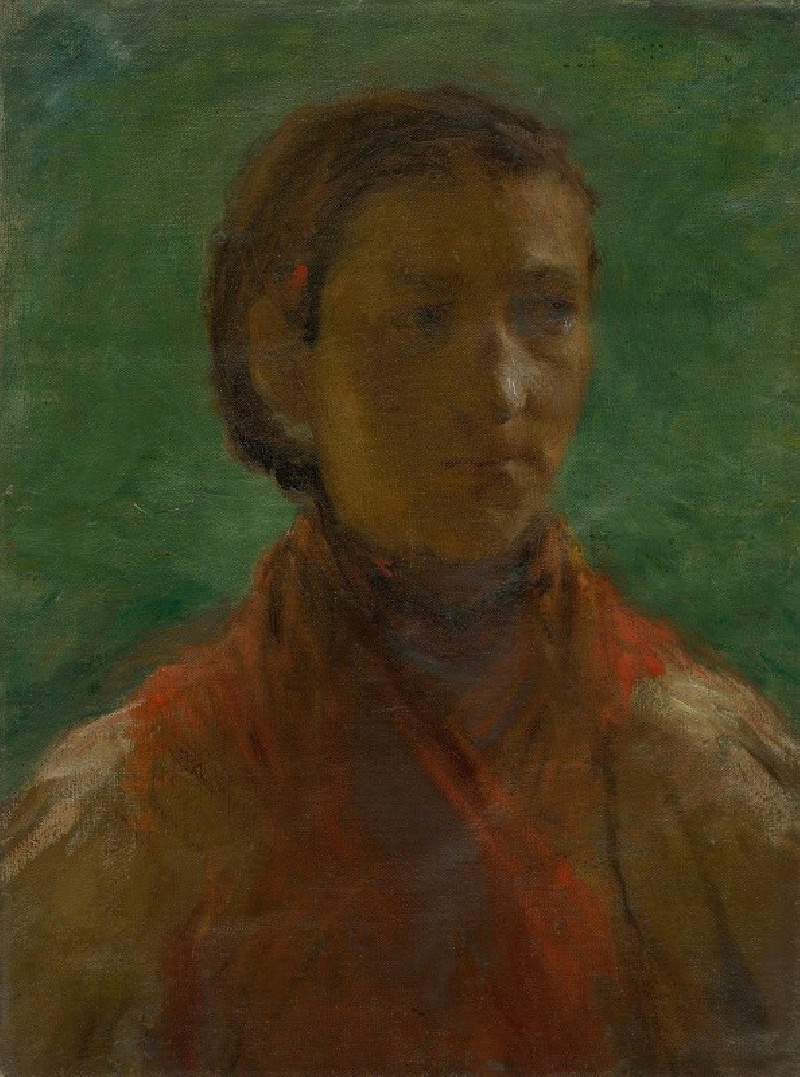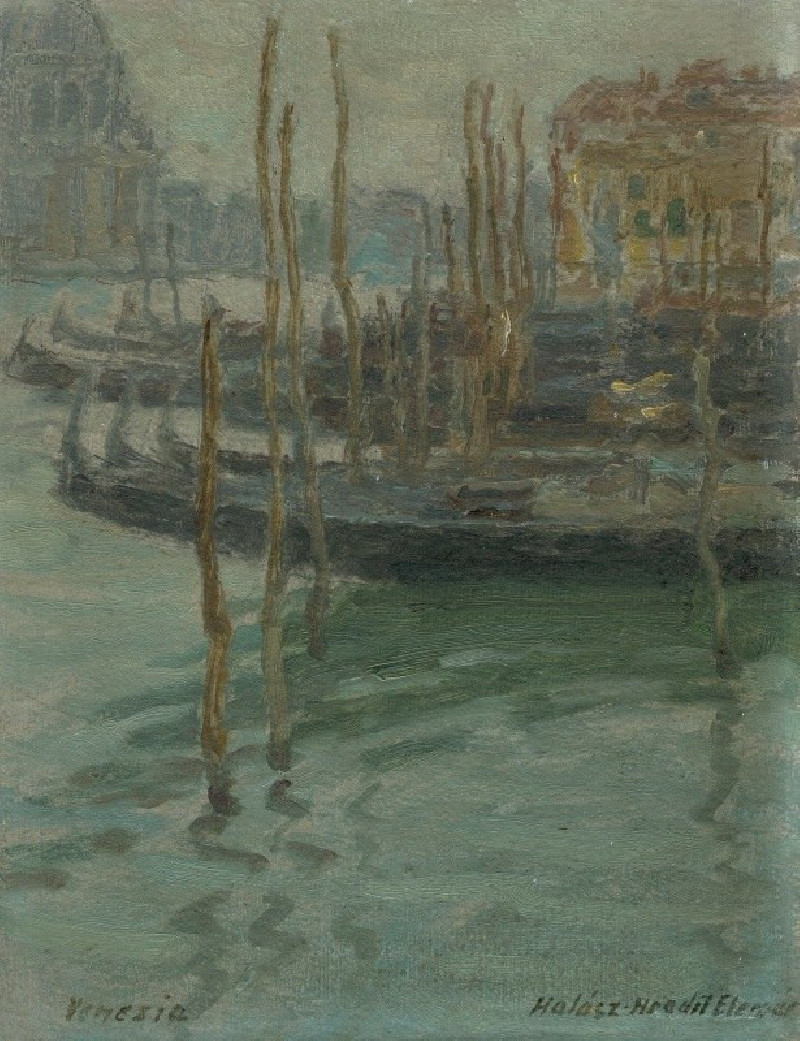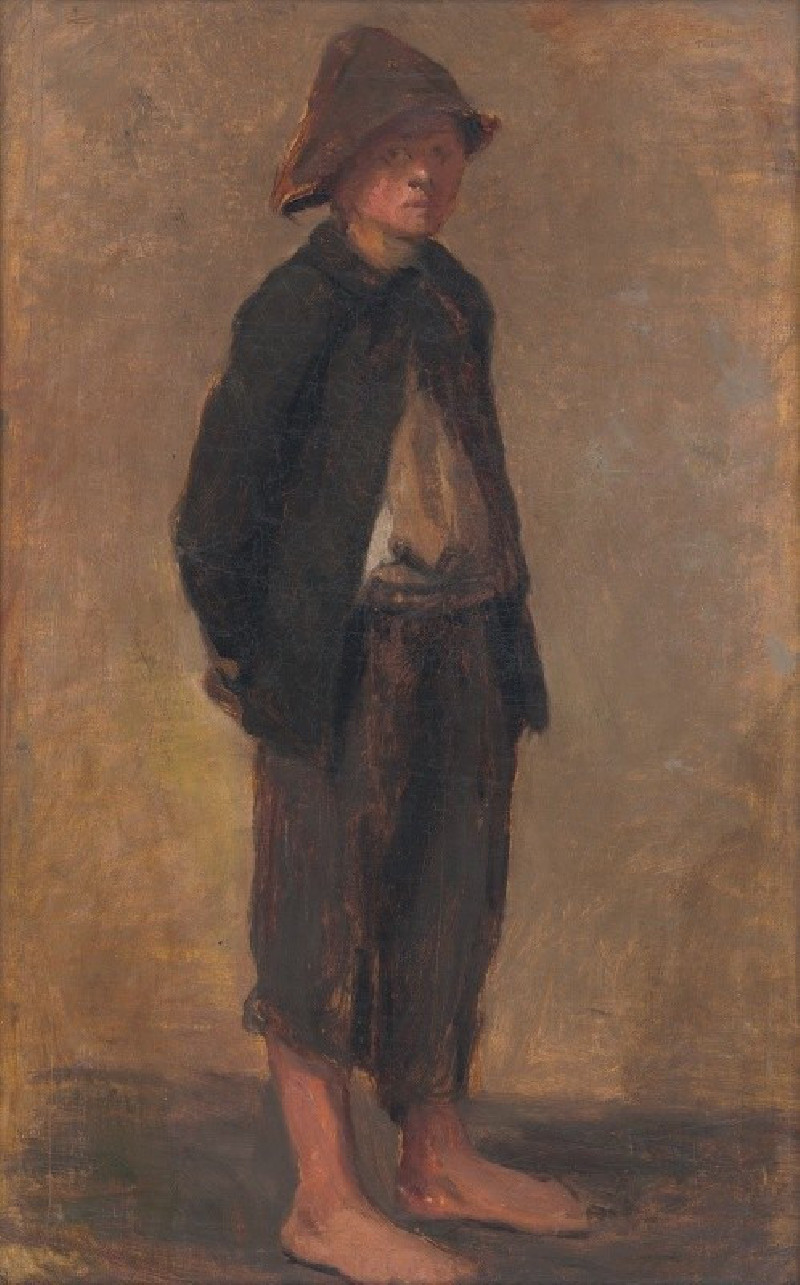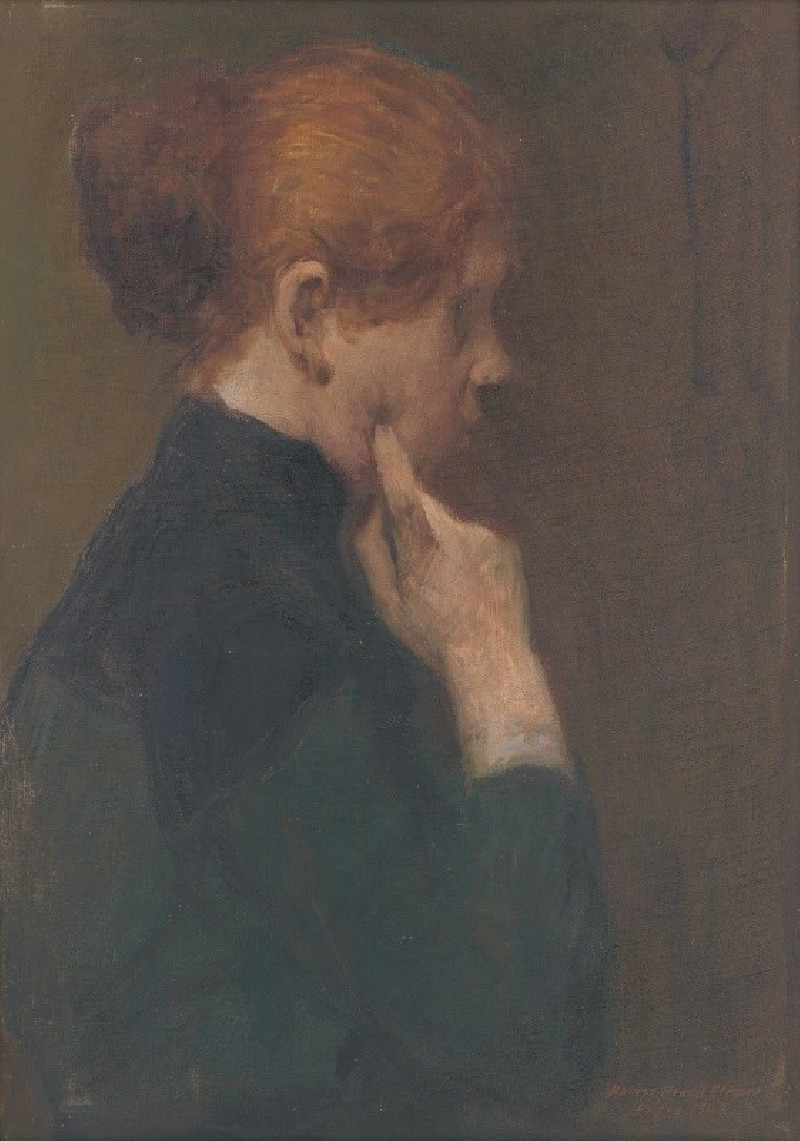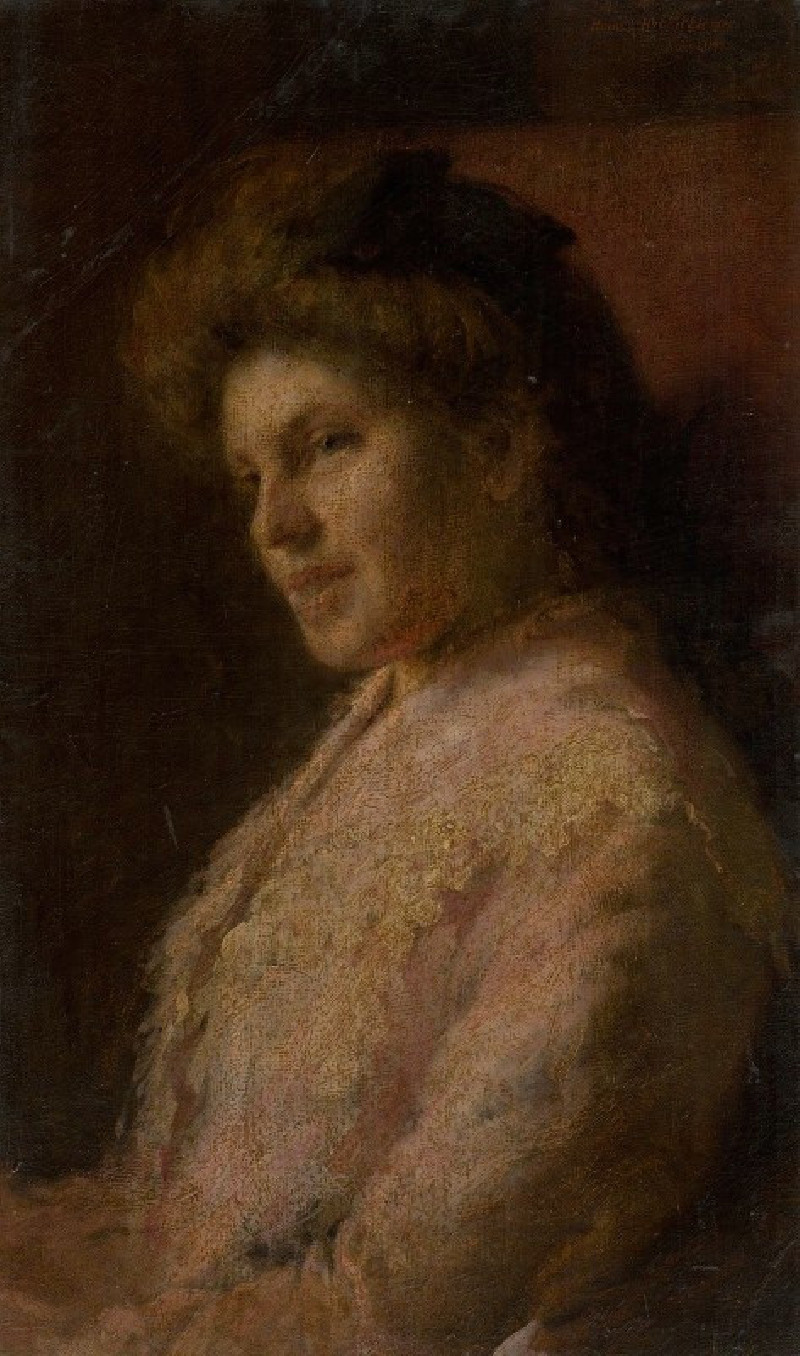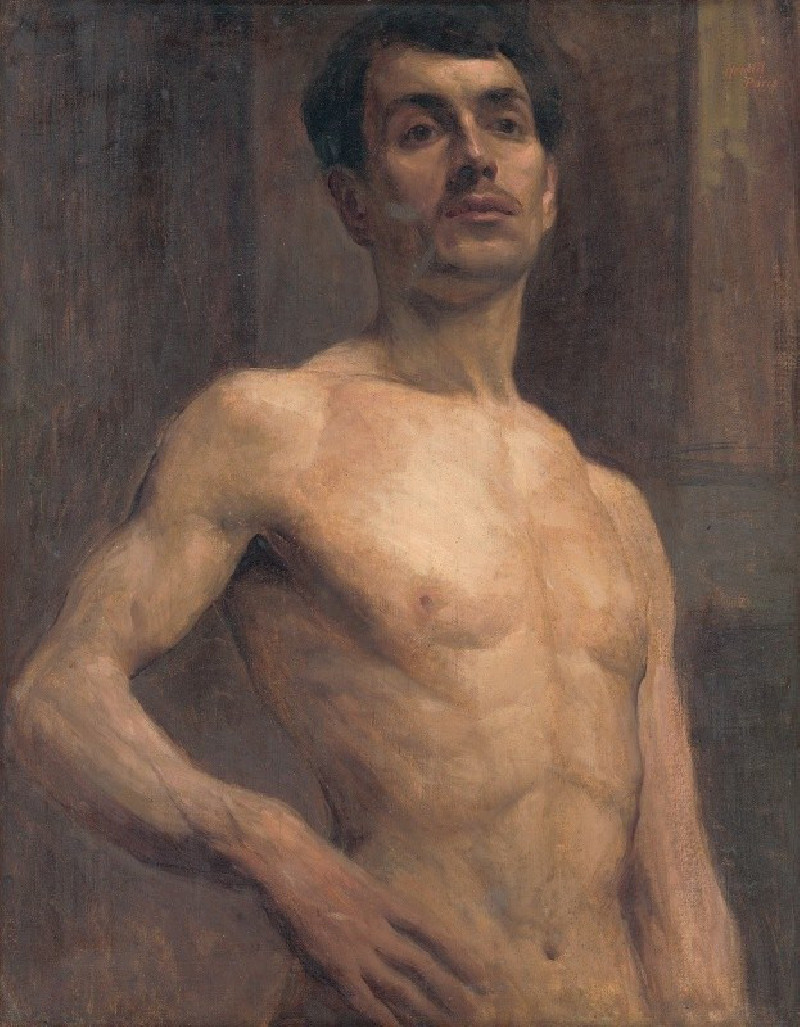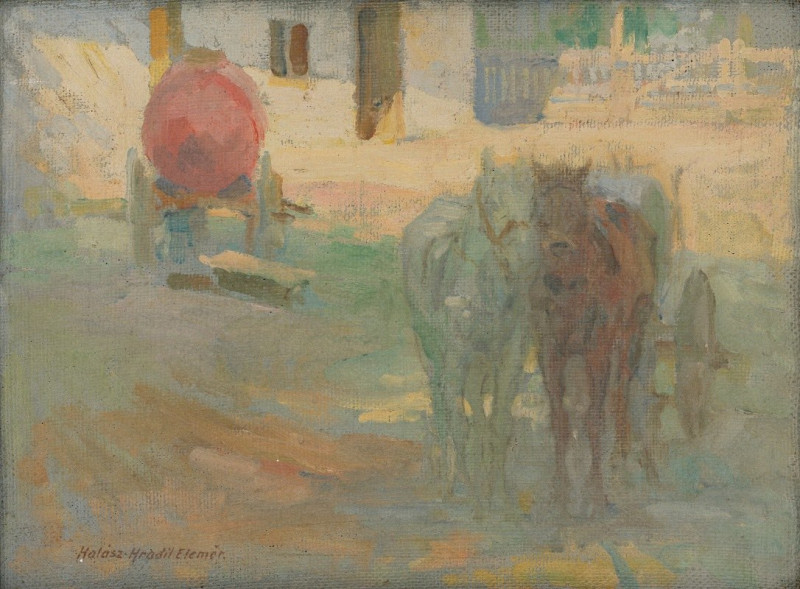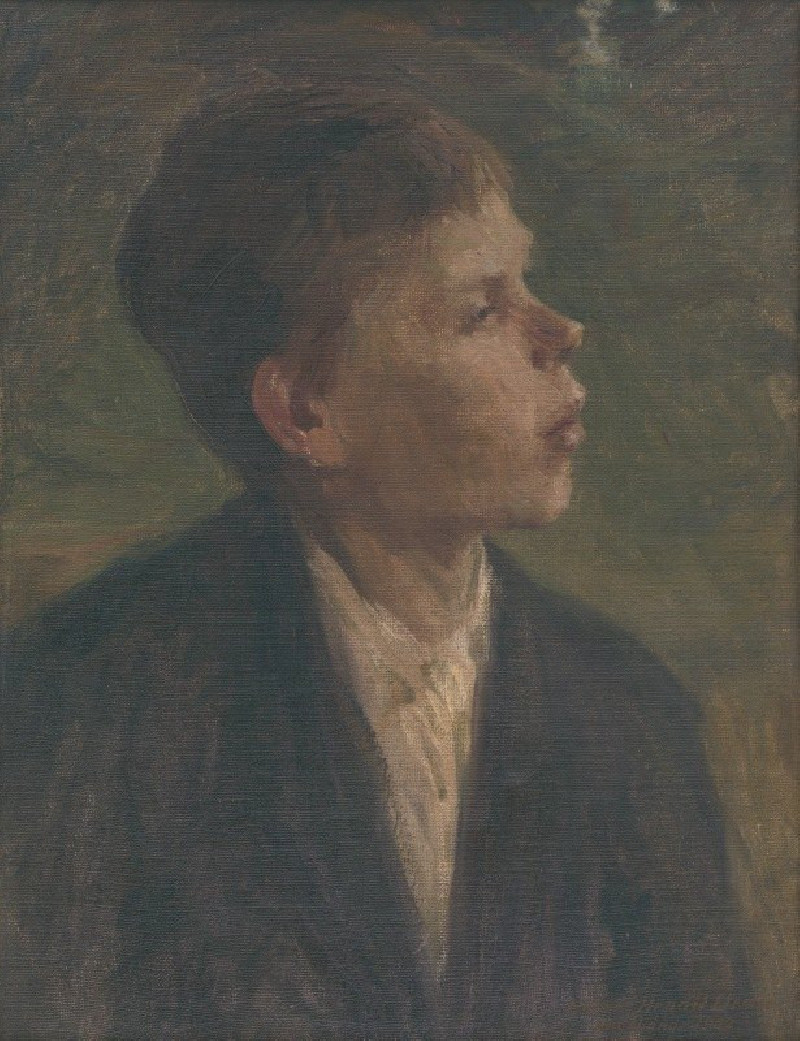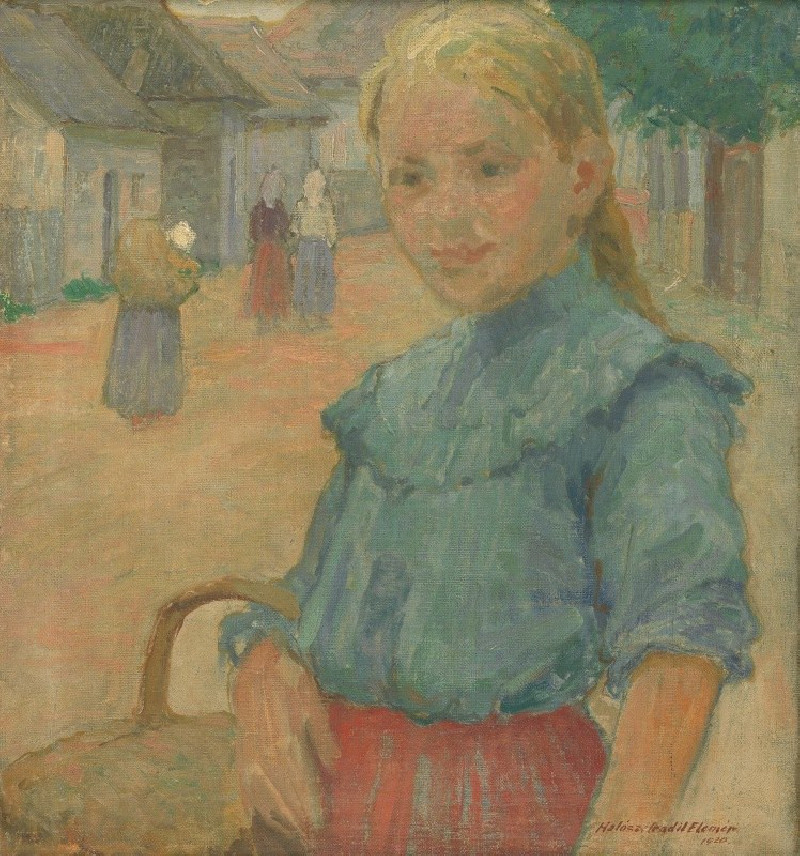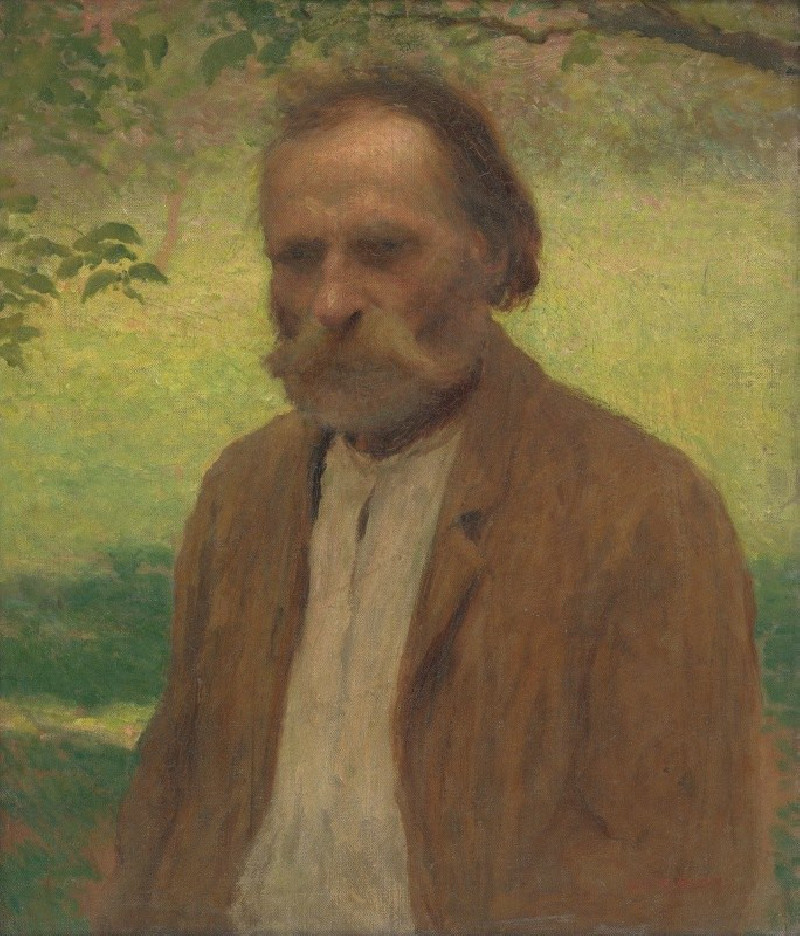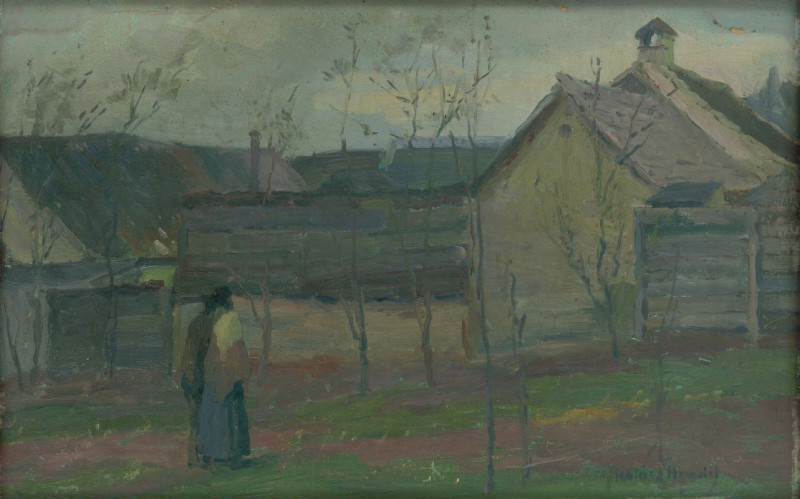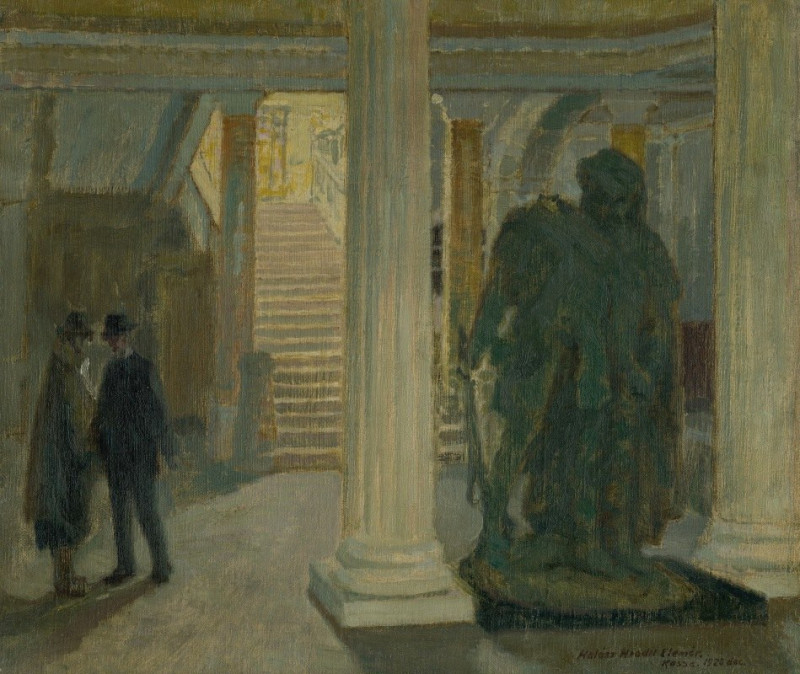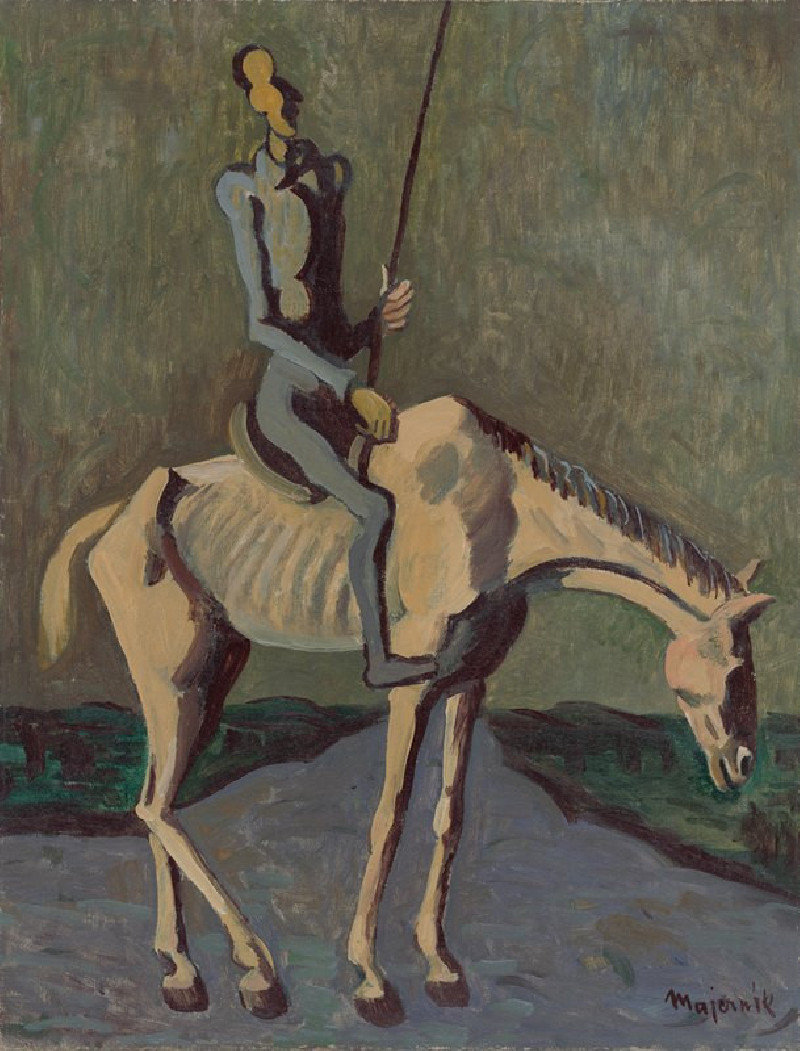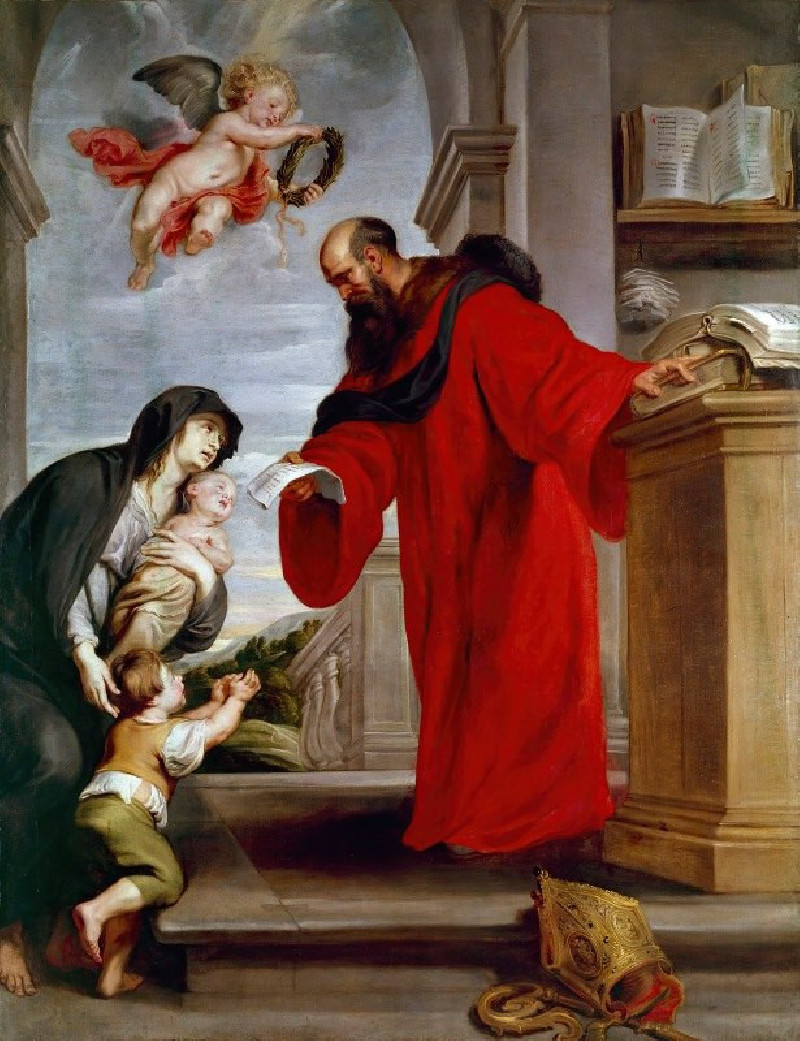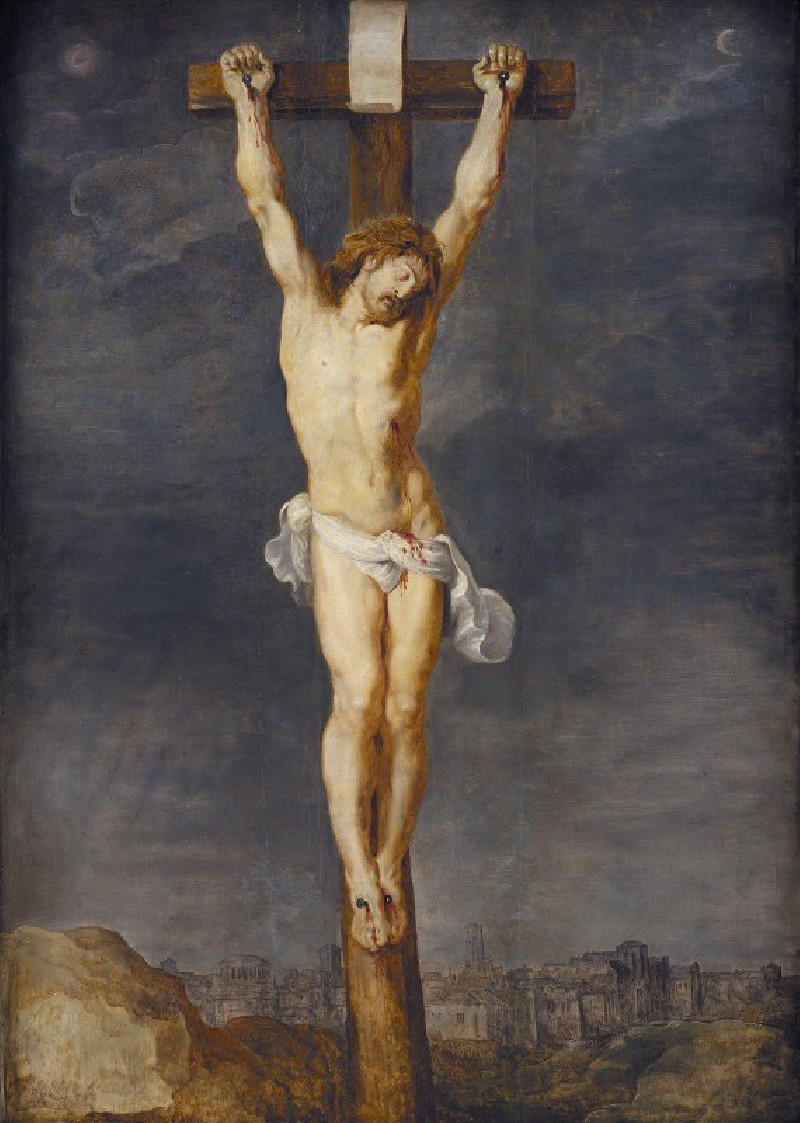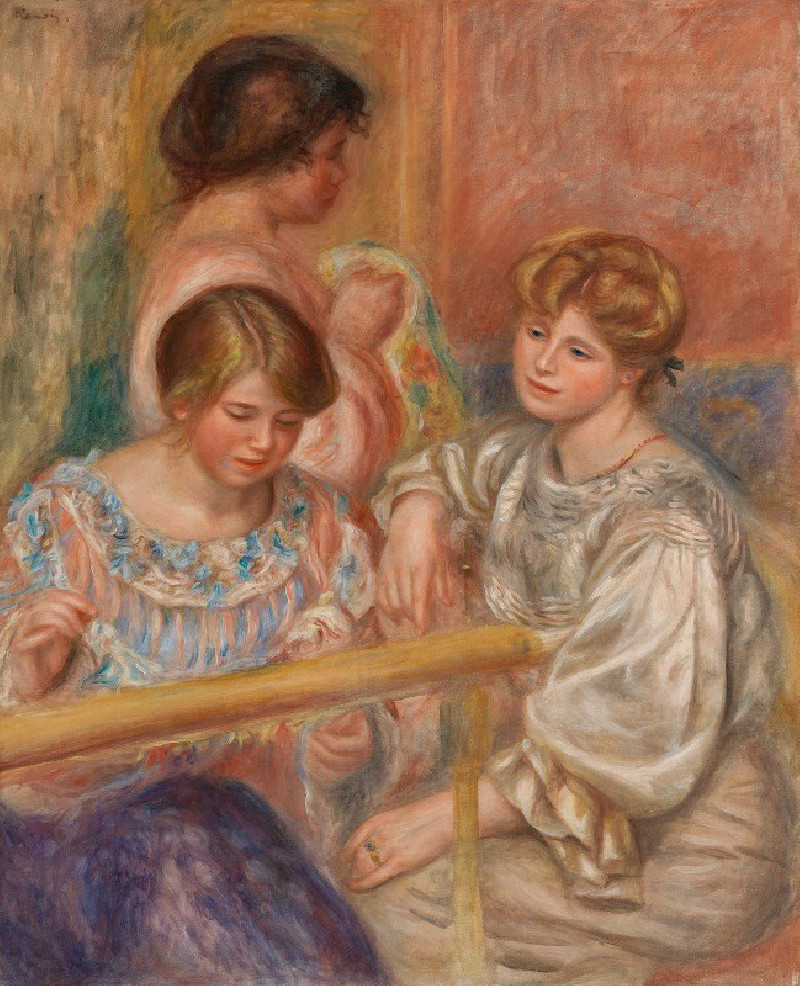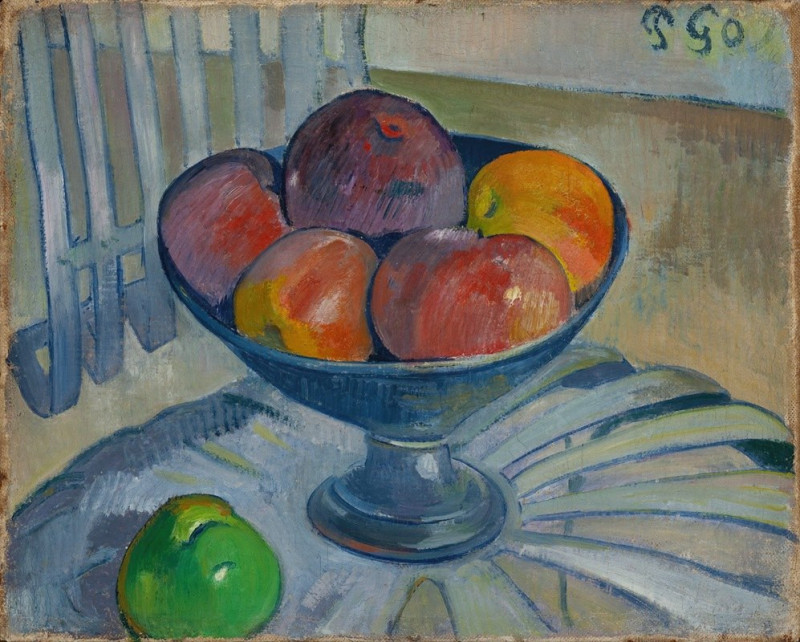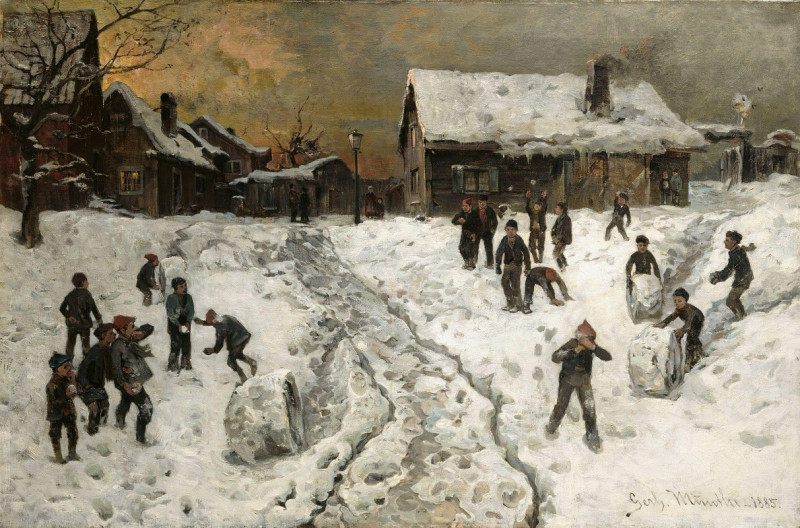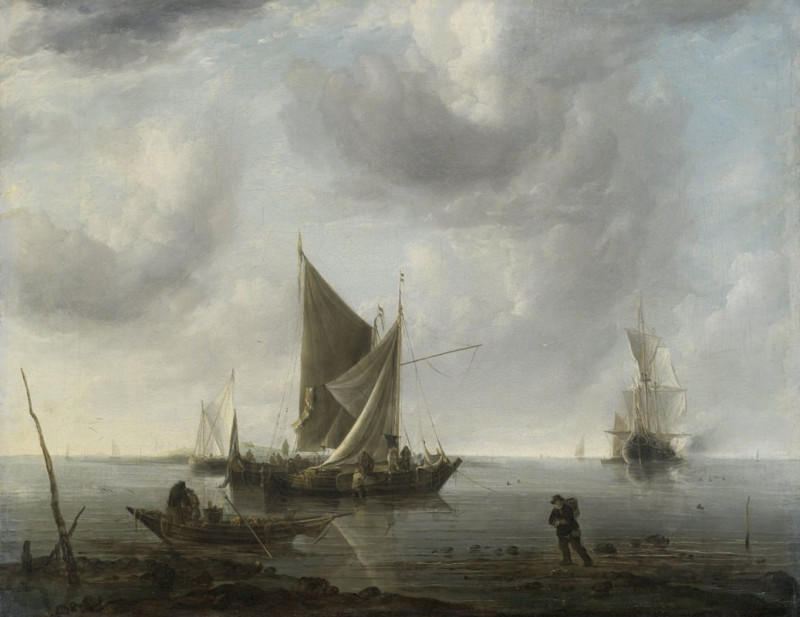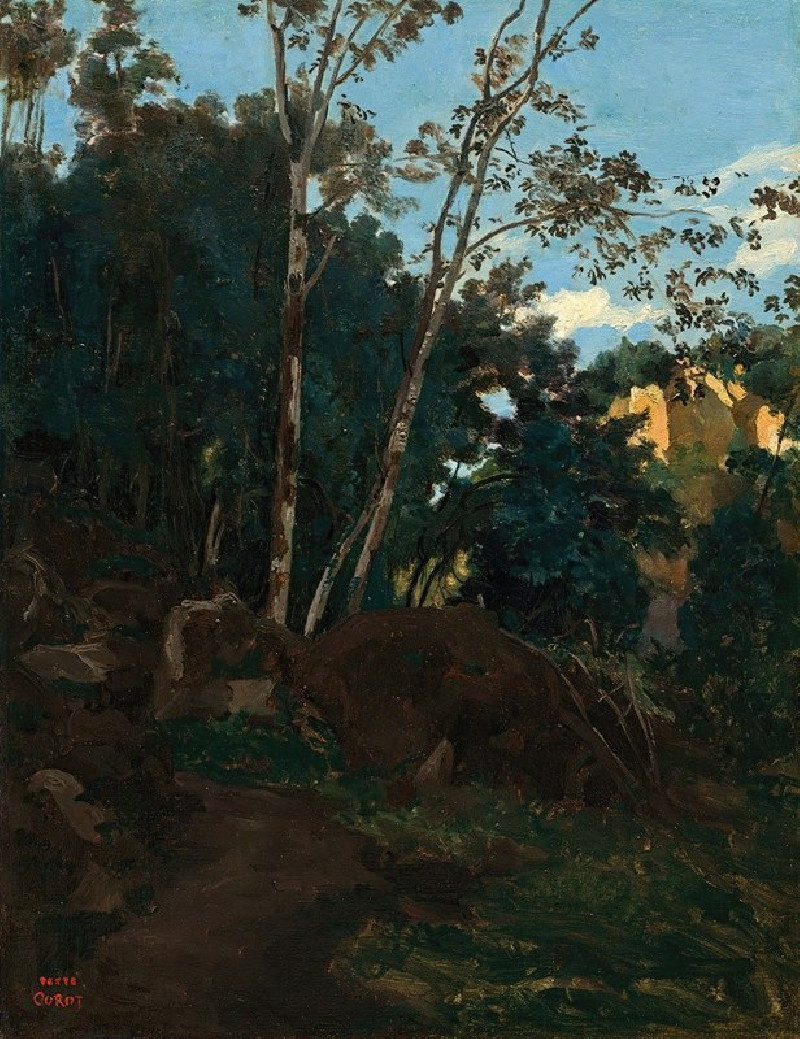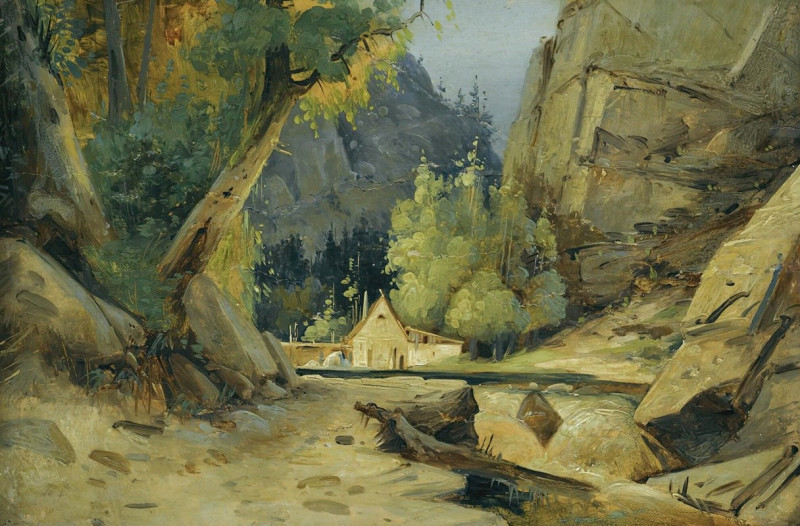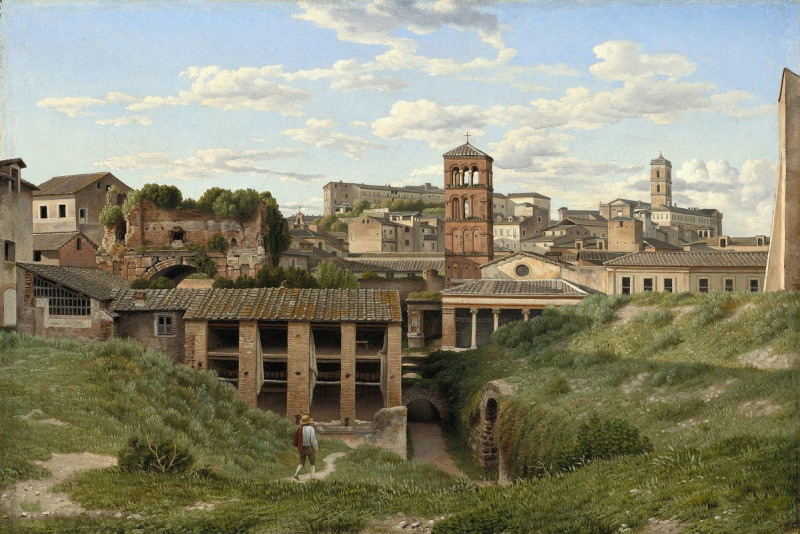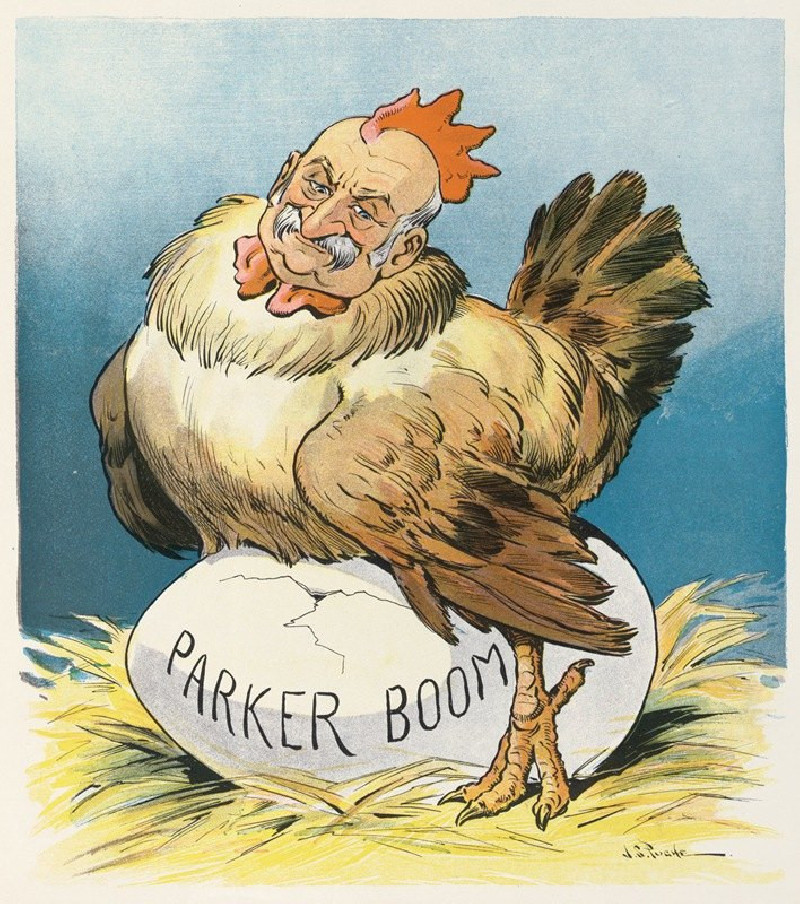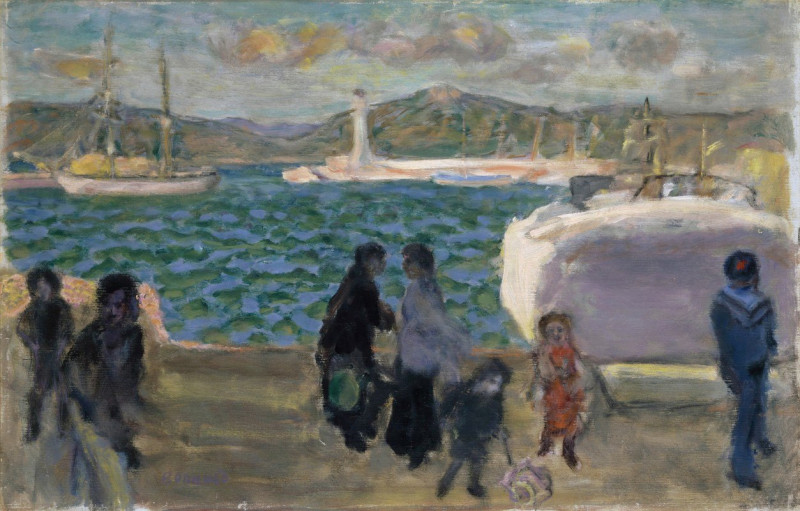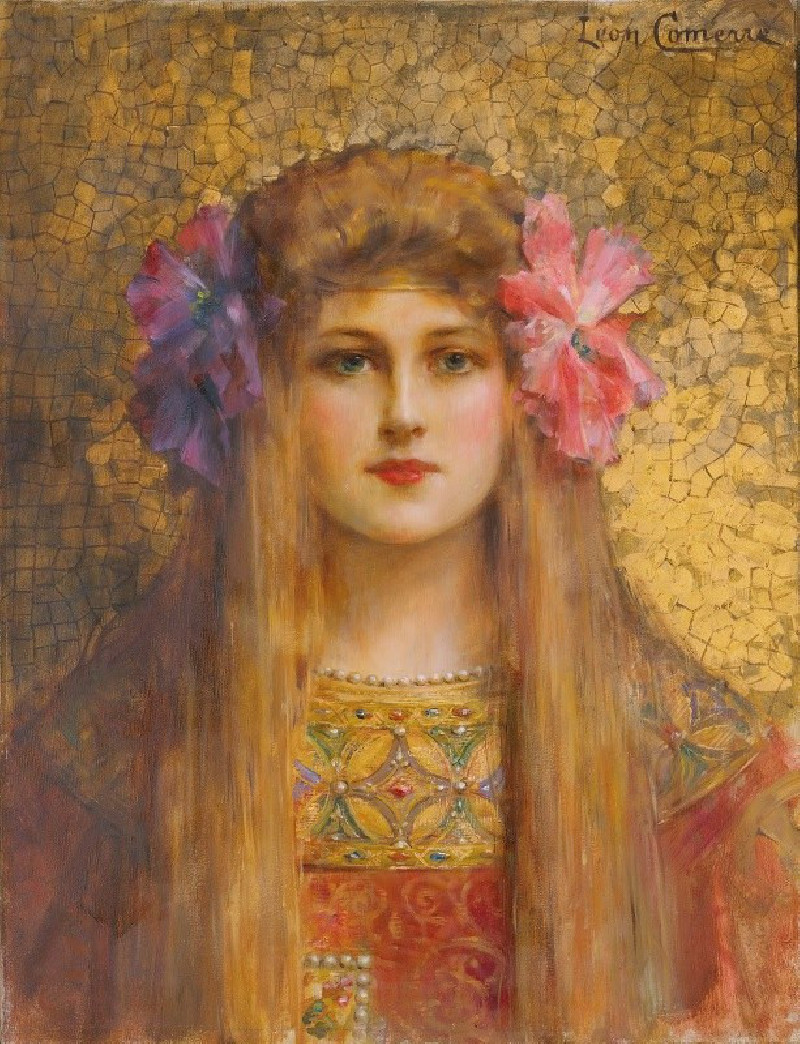Self portrait (1923)
Technique: Giclée quality print
Recommended by our customers
More about this artwork
Elemír Halász-Hradil's "Self-Portrait" from 1923 showcases a thought-provoking and emotive painting, capturing the artist amidst a backdrop of eerie, skeletal forms. At the forefront, Halász-Hradil portrays himself in sharp detail, his gaze penetrating and somber, reflecting a deep sense of introspection. The choice of dark, subdued colors emphasizes a mood of solemnity and perhaps, philosophical contemplation about mortality and the passing of time.Behind him, the presence of skulls adds a haunting layer to the composition, possibly representing his contemplation of death or the transient nature of life. These skeletal forms, juxtaposed with the living presence of the artist, create a stark contrast—a dialogue between life and death, the temporal and the eternal.Wearing a dark, traditional cap and a similarly dark robe, Halász-Hradil’s self-portrait is not just a reflection of himself but also embraces broader themes of human existence and the artist's own perceptions of life’s fleeting nature. This painting invites viewers to gaze into the artist’s soul and to explore their own feelings towards the inevitable truths of life and death.
Delivery
Returns
Elemír Halász-Hradil (1873 m. - 1948 m.) was a Slovak painter of Hungarian origin.
He lived in Vienna from 1892 to 1894.The following year he moved to Košice. He studied at Simon Hollósy's private school in Munich from 1897 to 1901, he then continued his studies at the Académie Julian in Paris with Professor Jean-Paul Laurens from 1902 to 1903.
With a soft palette and hazy paint handling, Halász-Hradil executed a variety of quiet portraits and scenes of everyday life. Along with selling his paintings, Halász-Hradil made a living as a painting teacher.

